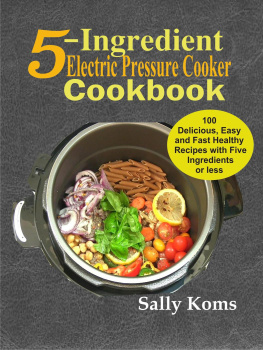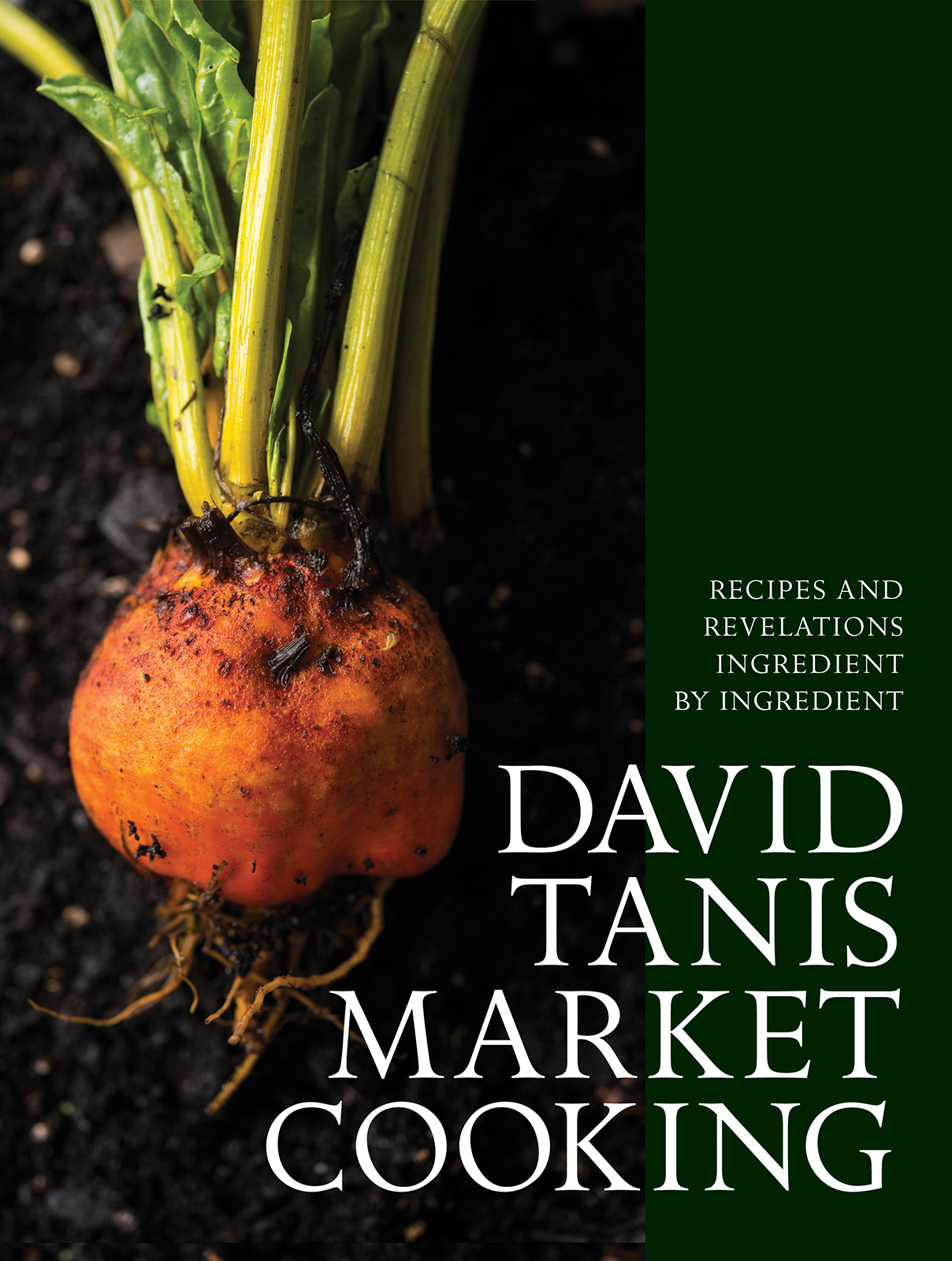
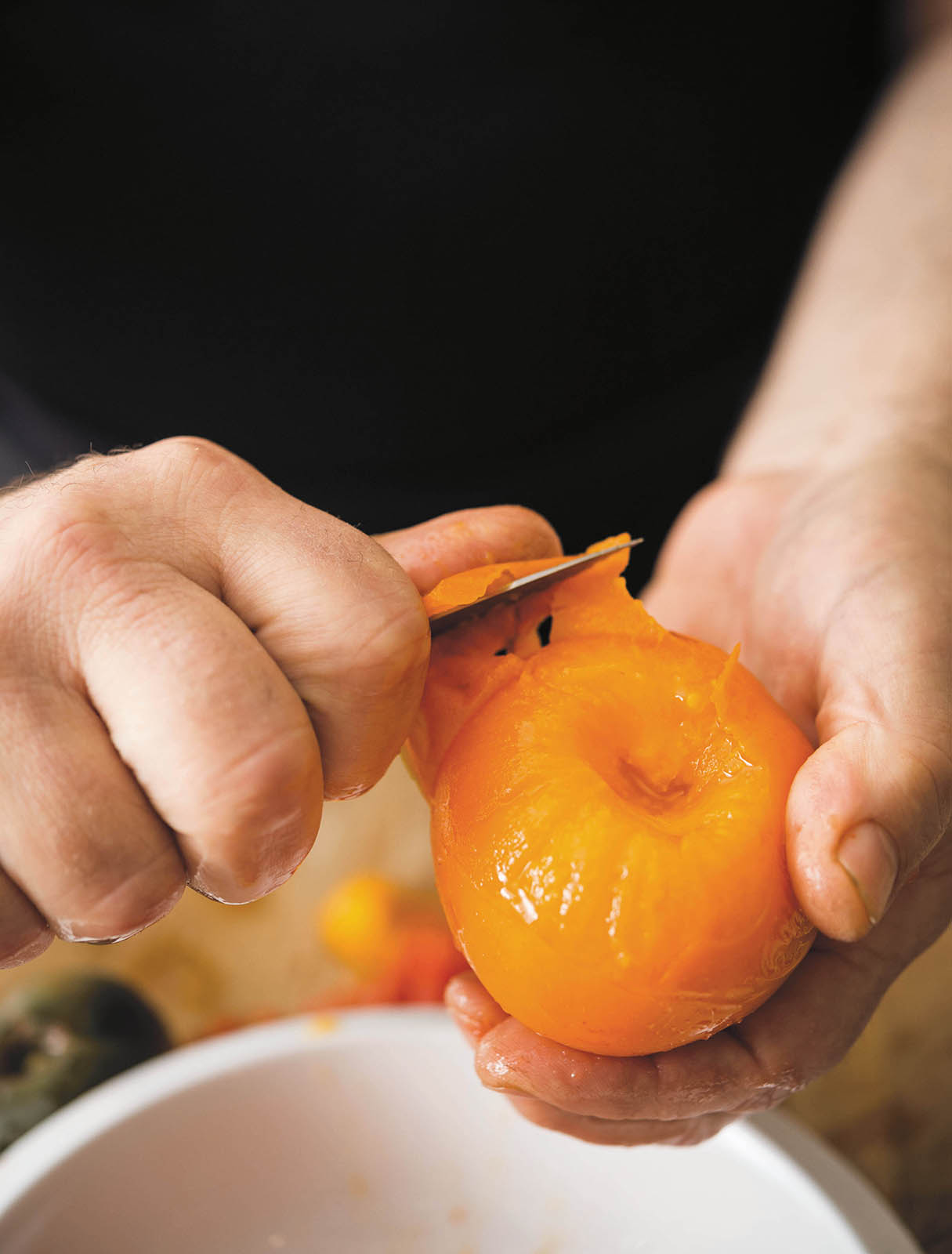
DAVID TANIS MARKET COOKING
Recipes and Revelations Ingredient by Ingredient
Photographs by Evan Sung

ARTISAN | New York
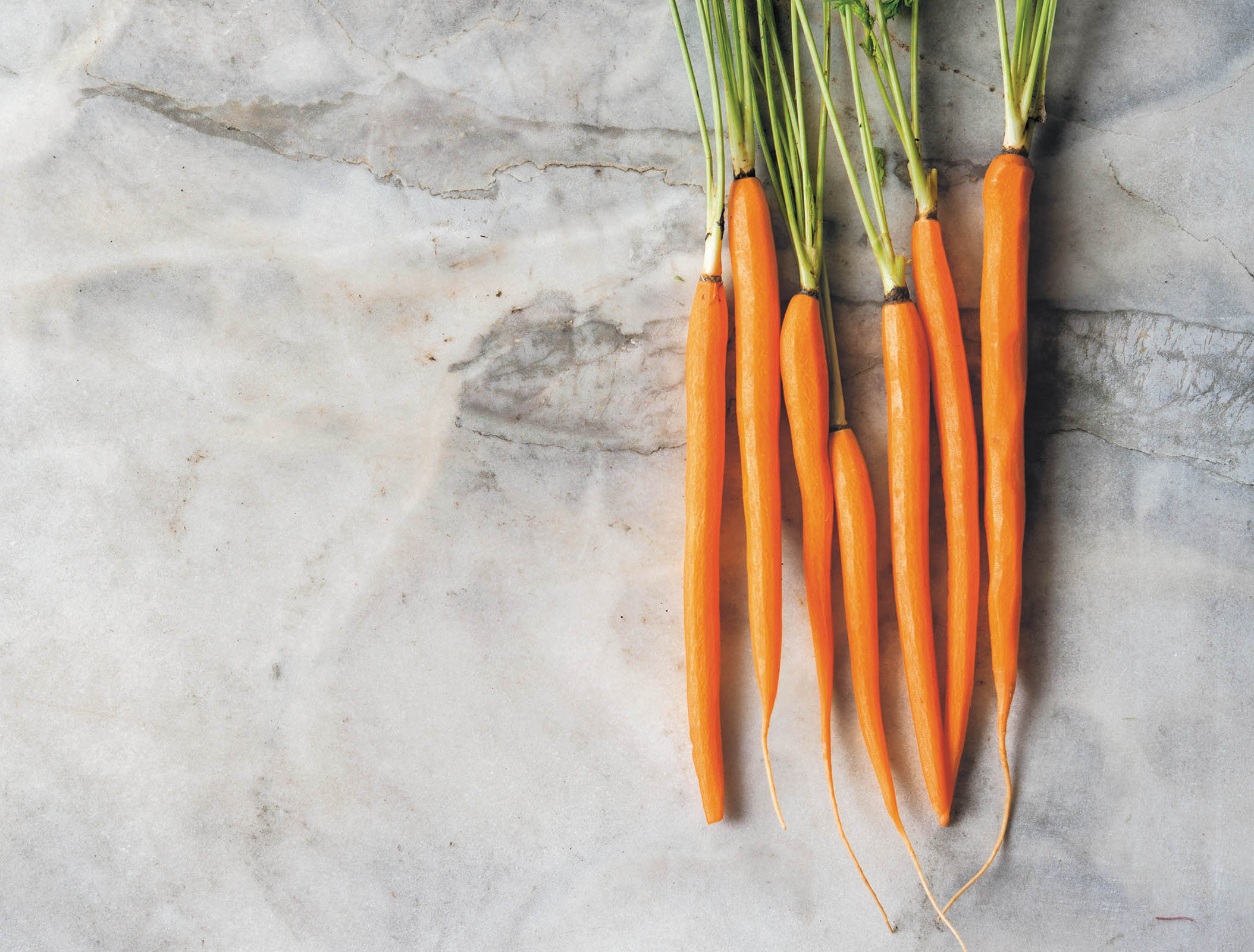
Contents
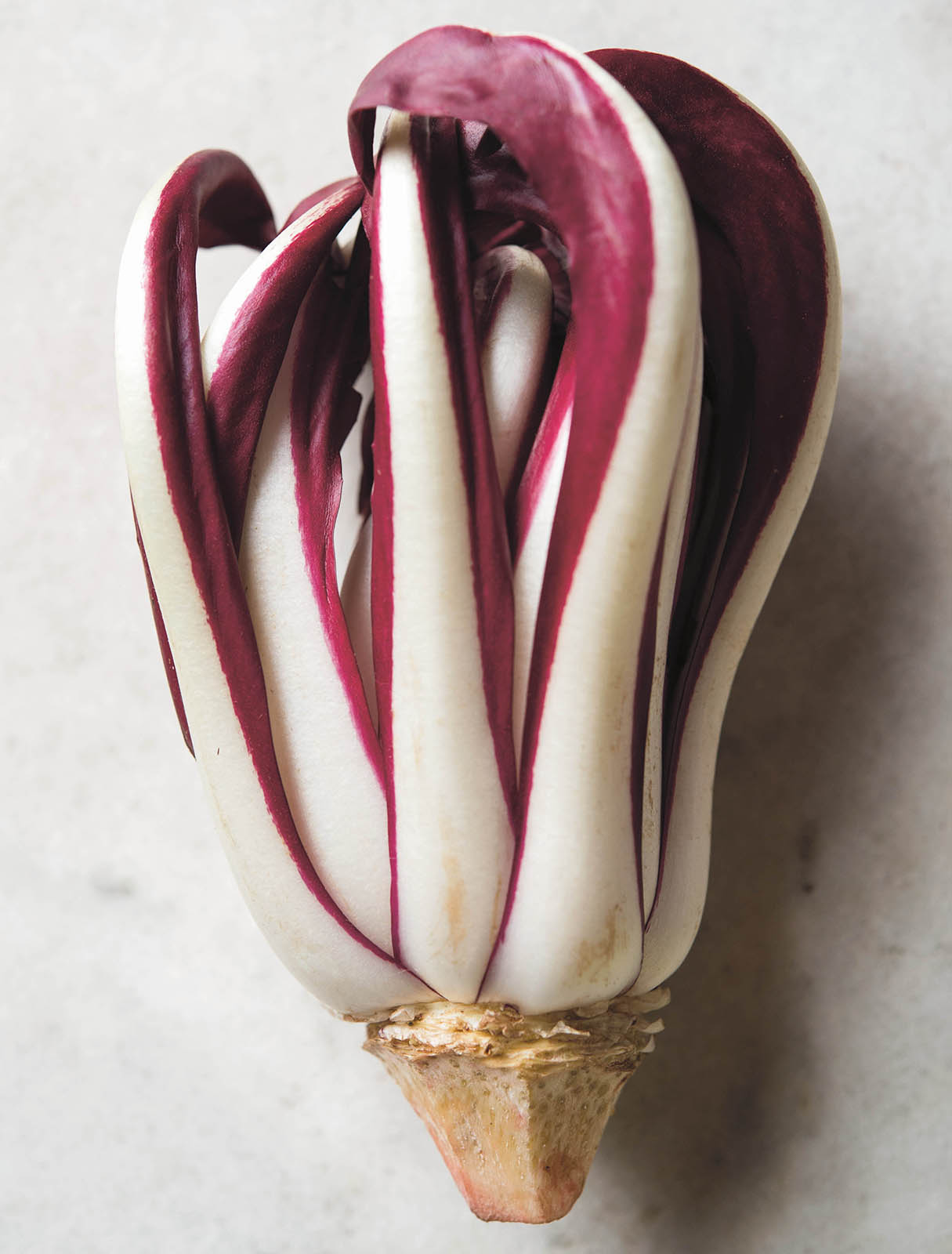
A head of radicchio Tardivo.
where Cooking Begins
When I say market cooking, Im referring to a common French term. If a French chef (or an acclaimed home cook) is asked which cuisine is his or her specialty, the response may well be la cuisine du march. It would be my response too. It implies a philosophy as much as a style of cooking. Loosely translated, it means: I go to the market, see what looks best, and then decide what will go on the menu.
The fresh ingredients provide inspiration for the meal. I dont go with a fixed idea of what I want; I look for the most sparkly fish, the most tantalizing vegetables. I want them to be fresh, local, and seasonalhardly a new concept, but a most admirable one. The best cooking I know depends upon it. Its the age-old, traditional, normal way, even if todays chefs and foodies lay claim to the farm-to-table moniker. A new generation is discovering the value of foraging, seeking out organic produce, and cooking over live fire. These are ancient practices. And for much of human history, sourcing local and seasonal produce was not a lifestyle choiceit was the only way to cook.
A key aspect of market cooking is simplicityletting the natural flavors of the ingredients shine. Delicious food doesnt have to be complicated. When tomatoes are truly vine-ripened, a little salt and olive oil are all you need. A roasted head of garlic gives immediate satisfaction; freshly picked asparagus needs just a few minutes of steaming and a good vinaigrette.
How did we stray so far from this place-based, seasonal approach? One-stop shopping at big-box stores may be convenient, but several stops at a couple of smaller shops may make a great difference. It means not settling for generic industrial eggs when a side trip from lifes busy thoroughfare will give you a better egg and a better meal. And perhaps a small adventure to boot. There really can be joy in marketing.
What follows is a collection of recipes for some of the dishes and ingredients I like bestmy own, admittedly sometimes quirky, favorite foods. Hence garlic, onions, and potatoes are given pride of place, and I wholeheartedly celebrate hot chiles and the power of picante. Whats more, the majority of the recipes are vegetable-based. Vegetables are central to a meal. I try to make them the focus, even if meat or fish is on the menu.
Some of the recipes here are quite precise, others are presented in a more suggestive fashion. But a recipe can only go so far. More important is understanding the process, the how and why, the technique, the feel; ultimately, recipes offer guidelines and quantities, but only experience can make you a better cook. Mastering kitchen fundamentals will increase your comfort and your enjoyment in the kitchen.
Cooking can be both a personal expression and a cultural one, connecting us to past, present, and future. It is at once creative and introspective. I also cook because I really want a good meal, and often the most satisfying way to get it is to make it myselfat home. Cooking (and, it follows, dining) is what makes a house a home, whether alone or with a companion, a few friends, or a large group.
There are a thousand good reasons to stay home and cook. When you get in the habit of cooking, its easy to weave it into your daily routine. If you cook once in a blue moon, theres no continuity; you may feel rusty or reticent or less than rhythmic.
But a trip to the market will help get you in the mood. In every season, there are colorful fruits and vegetables to seduce you. Your market may be a supermarket or a farm stand or a corner store that has fresh figs from the owners tree. If youre lucky, theres a regular farmers market in the vicinity. In any case, your goal is to procure the freshest ingredients and to cook them simply.
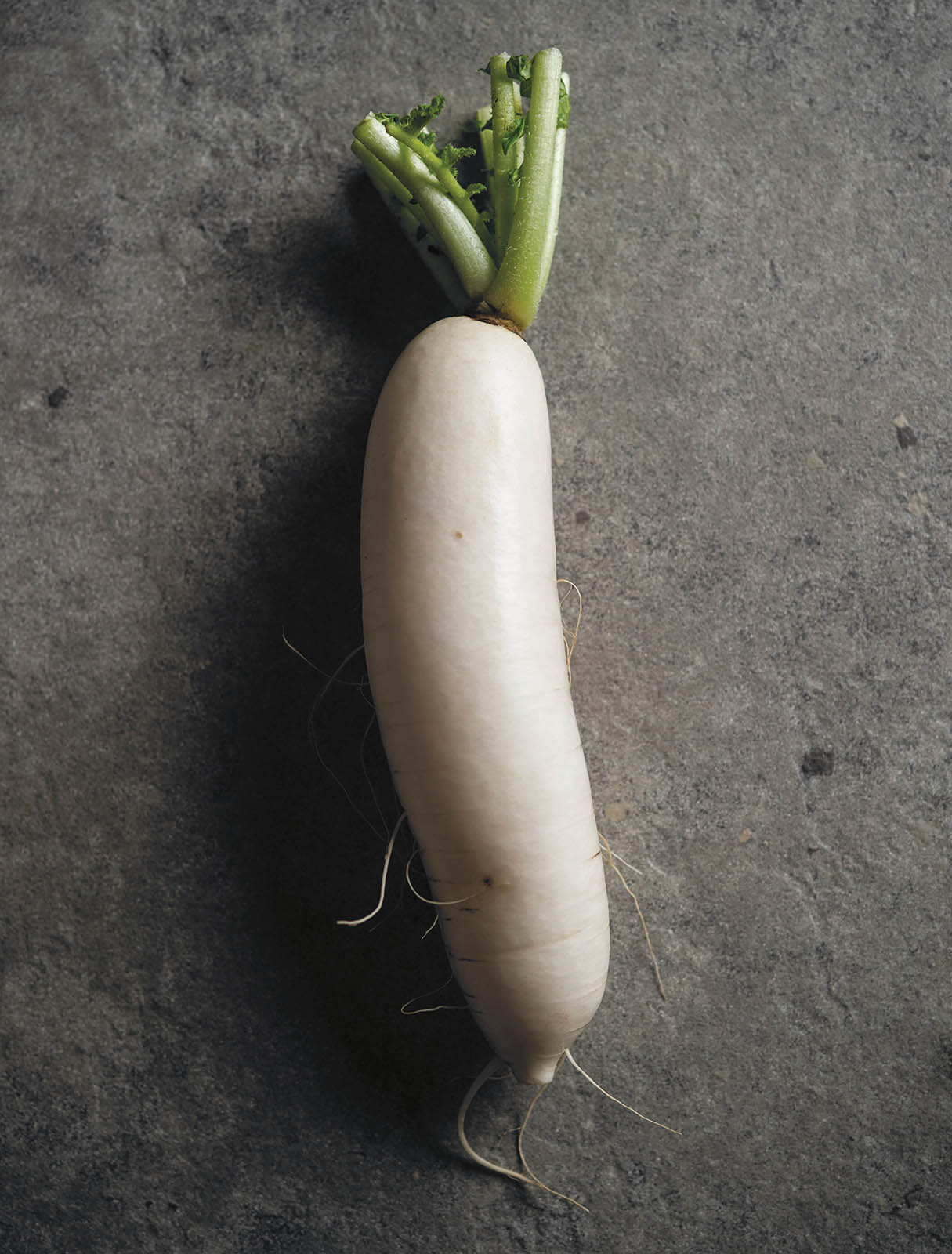
Daikon radish.
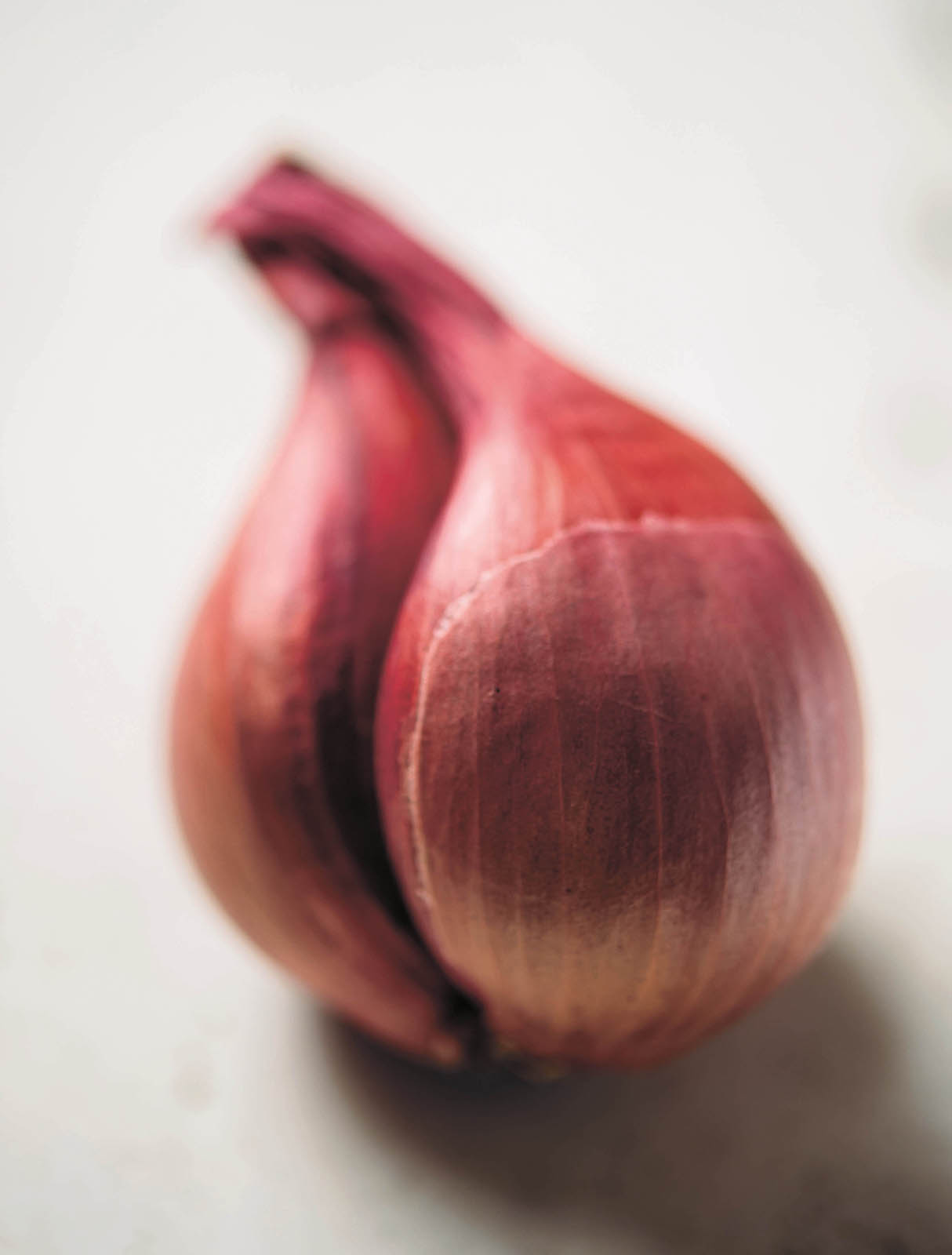
ALLIUMS UNITED
One could nourish oneself quite happily only on humble alliums before ever venturing into the larger vegetable kingdom. These workhorses of the kitchen, so often taken for granted, can and should be appreciated in their own right. Any one of these allium family membersgarlic, onion, leek, shallot, or scallioncan make a meal. Soups come to mind immediately, made from just one or another, or a combination. A rustic onion soup, a creamy leek potage, and a simple garlic broth can all be magnificent.
But perhaps alliums are best known in their supporting roles. Every cook is familiar with the ritual of slowly softening onions in butter, olive oil, lard, or poultry fatis there any lovelier aroma?as the necessary first step to building flavor before other ingredients are added. Its fitting that we call this sweating, since alliums do a lot of the heavy lifting when it comes to making a good meal. They boost tomatoes toward an eventual sauce, they give depth to a simple paella, and they add character to a braised chicken.
Nearly every allium can be roasted, grilled, stewed, caramelized, pickled, or fried. All these techniques serve to emphasize their innate sweetness, taming their sharp bite. But often they dont require cooking at all. Toasted bread rubbed with raw garlic is divine. Thinly sliced crisp raw onions are welcome in a salad. A little minced raw shallot or a bit of raw garlic are de rigueur for a good vinaigrette. A sprinkle of slivered raw scallions or of chives, another allium family member, is often just the right finish.
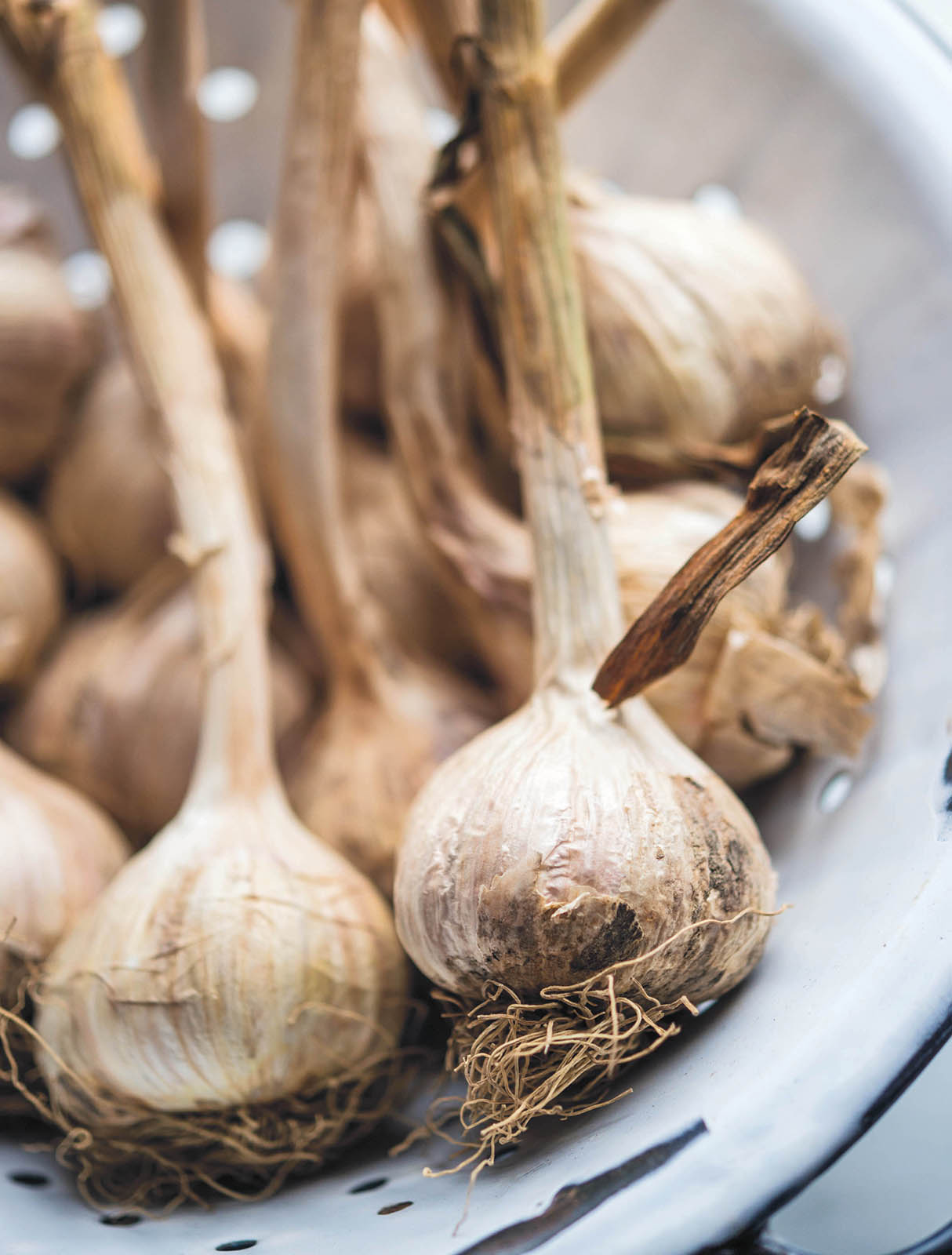
Garlic gloriously improves the flavor of nearly any dish.
Garlic, Always
Why does garlic come at the beginning of the book? Because its one of the most indispensable items in the kitchen. At least I think so. Its on my short list of cant cook without ingredients. Garlic quickens the appetiteit gets the juices flowing. Many a good meal begins with garlic gently sizzling in a pan in a little olive oil, sending its singular aroma wafting throughout the kitchen. It signifies to anyone within smelling distance that good things are soon to come.
If you want to understand how garlic grows, plant a few cloves in a flowerpot and observe what happens. First youll see a pale green shoot, like a skinny scallion. (When you go to the farmers market in early spring, you can often find foot-long young garlic shoots, also called green garlic. Green garlic is tender top to bottom, so aside from a little trimming, you can use it all. The flavor is fresh, mild, and sweet, in a garlicky way.) After spending another month in the ground, a bulbous head begins to form at the root. A few weeks later, when the cloves within have fully formed, they have a pungent, bright flavor, undeniably garlicky. New-crop garlic, ready by early summer, is divine; this is garlic at its best. At the market, youll know it by its colorful large heads, still fresh pink and purple, for sale before the majority of the crop goes to the drying barns to cure for use throughout the year.
Next page

